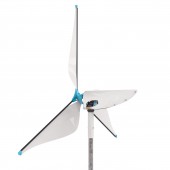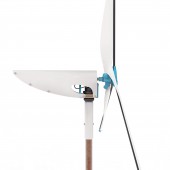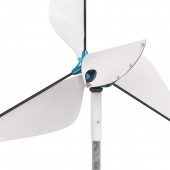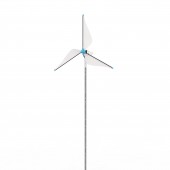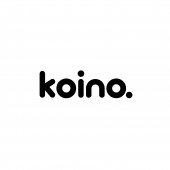Wireframe Affordable wind turbine by Ben Koros |
Home > Winners > #49065 |
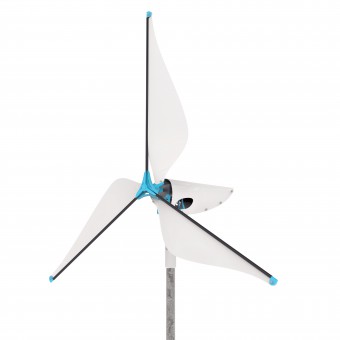 |
|
||||
| DESIGN DETAILS | |||||
| DESIGN NAME: Wireframe PRIMARY FUNCTION: Affordable wind turbine INSPIRATION: I have read about William Kamkwamba, a young boy from Malawi (see the case study in the attached PDF), who built his first wind turbine out of scrap materials to help his family. I thought, a super cheap and accessible turbine could be the solution for the lack of electricity, that many villages around the world struggle with - before (for example) Internet.org can bring affordable internet to them. But how can such a product spread, and be held up for a long time, while generating just enough electricity for a village household? That's the challenge... UNIQUE PROPERTIES / PROJECT DESCRIPTION: Wireframe is a system that brings cheap electricity to village households. It considers the development of extremelly cheap wind turbines made partially of recycled components, and training locals to build, maintain and spread them in their communities, in order to make villages connect to the 'global information society'. OPERATION / FLOW / INTERACTION: Wireframe is basically a system, that teaches villagers how to build and maintain wind turbines, while also providing the cheapest and most accessible wind turbine (kit) for them to use and spread, so whole villages can gain access to basic household electricity to fuel simple devices, such as LED lighting, radios, electric tools, etc. PROJECT DURATION AND LOCATION: The project started in April 2016, and currently finished the 'last' prototype phase. FITS BEST INTO CATEGORY: Social Design |
PRODUCTION / REALIZATION TECHNOLOGY: After researching the target audience and listening to presentations of well known people (Superlocal, f.e.), who has already designed products for people of Malawi - I read up on wind turbines and possible technologies, then used the 'Design Thinking' methodology to evaluate my drafts. Some parts are 3D printed from biodegradable PLA, the cover and blades are cut from a styrene sheet, all the other components are found and recycled / upcycled. The working prototype has been made in three days (with the search for components), and assembled in 15 minutes. SPECIFICATIONS / TECHNICAL PROPERTIES: The diameter of the blades is 1200mm, the lenght of the covered frame is 400mm. The current model holds the turbine at 2000mm height (at it's bottom), but that would vary depending on the deployment location. TAGS: wireframe, turbine, wind, village, electricity, social, RESEARCH ABSTRACT: 1. Academic research, online and printed case studies, personal experience 2. Target group, what's needed for MVP, what are given in the area, how to spread product, what are the social circumstances 3. Methodology: Design Thinking (for product development) 4. online sources, live and online talks and presentations. 5. mainly for building more efficient product 6. cost effective and above expectation efficiency 7. N/A 8. The final product, and social engineering principles, business model for partnership program with businesses and universities. CHALLENGE: Spreading an idea and product without the help of the internet was also a hard objective to complete, as well as creating something so simple, in order to make it understandable - so people can be easily trained to build and maintain it. Another challenging factor was to keep the price under 15Euros. The end result turned out to be cheaper than the cheapest component of the cheapest hobby turbines around. Also, it was hard to take the weather, aerodynamics, and component supply into consideration, while keeping the product cost so low. ADDED DATE: 2016-06-21 21:41:49 TEAM MEMBERS (1) : IMAGE CREDITS: Ben Koros, 2016. |
||||
| Visit the following page to learn more: https://www.koino.hu/ | |||||
| AWARD DETAILS | |
 |
Wireframe Affordable Wind Turbine by Ben Koros is Winner in Social Design Category, 2016 - 2017.· Press Members: Login or Register to request an exclusive interview with Ben Koros. · Click here to register inorder to view the profile and other works by Ben Koros. |
| SOCIAL |
| + Add to Likes / Favorites | Send to My Email | Comment | Testimonials | View Press-Release | Press Kit |

